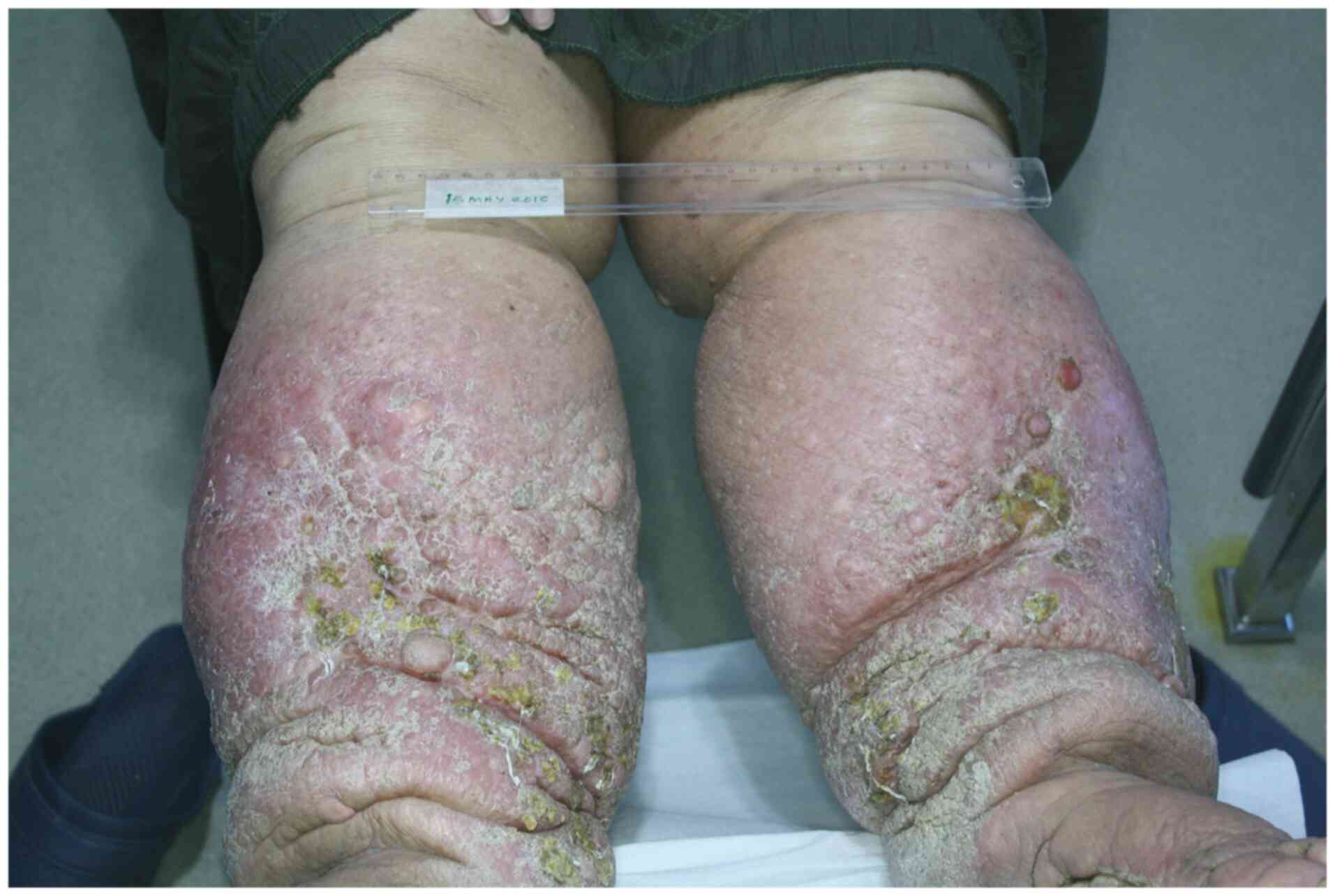An integrative therapeutic approach to elephantiasis nostras verrucosa: A case report
- Authors:
- Published online on: February 16, 2022 https://doi.org/10.3892/etm.2022.11218
- Article Number: 289
-
Copyright: © Nwabudike et al. This is an open access article distributed under the terms of Creative Commons Attribution License.
Metrics: Total
Views: 0 (Spandidos Publications: | PMC Statistics: )
Total PDF Downloads: 0 (Spandidos Publications: | PMC Statistics: )
Abstract
Elephantiasis nostras is a chronic disorder that is difficult to treat. It is characterized by marked lymphedema, associated with hyperkeratosis, ulceration, deep skin folds and a cobblestone appearance of the skin. Causes include parasitic and bacterial infections, neoplasia and obesity, but numerous cases have uncertain aetiology. Treatment includes surgery and medication, which are associated with variable results. In the present study, a 72‑year old female with renal insufficiency presented with leg enlargement of 3‑4 years duration, which rendered her housebound. Examination showed massive lower limb enlargement, with typical cobblestone appearance. She was on furoseminde 80 mg/day. A diagnosis of elephantiasis nostras was made. Then, she was treated with increased furosemide from 80 to 120 mg daily and homeopathic Apocynum cannabinum, CH30 potency, t.d.s. Unavailability of corresponding fit excluded the use of compressive stockings. The patient remitted over 18 months, with limb diameters dropping from 68/46 cm (right mid‑calf/ankle) and 67/43 cm (left mid‑calf/ankle) to 64/43 cm (right mid‑calf/ankle) and 64.5/45 cm (left mid‑calf/ankle) at 6 months, 63/42 cm (right mid‑calf/ankle) and 65/41 cm (left mid‑calf/ankle) at 12 months, and 46/35 cm (right mid‑calf/ankle) and 48/36 cm (left mid‑calf/ankle) at 18 months, with improvement of skin appearance. Elephantiasis nostras is not spontaneously remitting. In this resource‑limited setting, furosemide combined with homeopathic Apocynum cannabinum has proved valuable and may be used for similar cases.













